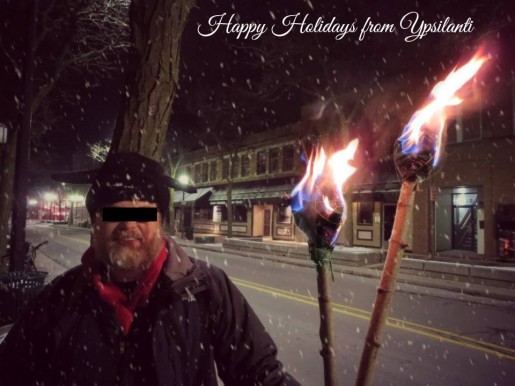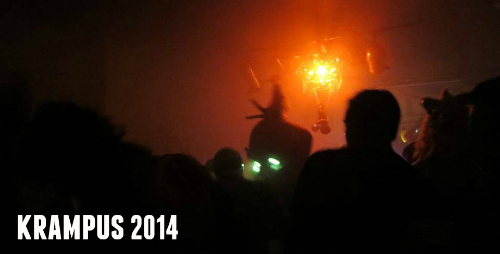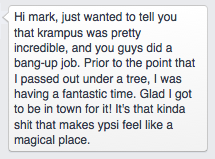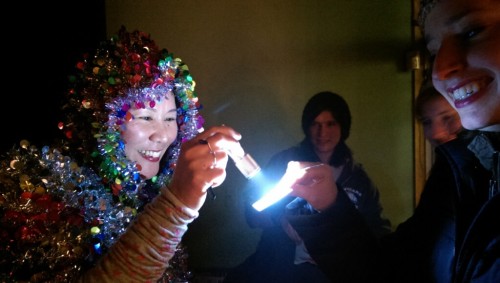In what seems like a pretty clear attempt to appease the far right and drive more of Michigan’s poor from the public assistance rolls, Governor Rick Snyder signed legislation on the day after Christmas giving the State the power to collect and test the urine of welfare recipients suspected of using drugs. [“Merry Christmas, welfare queens!”]
The bundle of legislation, which includes House Bill 4118 and Senate Bill 275, allows for a one-year pilot program to be implemented in three as-yet-to-be-determined counties.
Leaving aside for the moment that similar programs have failed miserably elsewhere, I’m curious as to how State officials will be selecting individuals for testing. Will there be specific things they’re looking for? Will they be looking for track marks? Will being pale and disheveled be enough to bring out a piss cop to escort you into the restroom? Will race factor into it? Will a skinny, young black man in drooping pants, for instance, be more susceptible to testing than, say, a middle-aged white man, like myself, wearing a suit? I’d love to read their guidelines as to what a “possible drug user” looks like…
One wonders if they’ll have a book of photos that State employees can refer to when trying to asses if someone looks like a drug addict. And, if so, one wonders if it will include a photo of Congressman Trey Radel of Florida, who was arrested last year for cocaine possession, shortly after he voted in favor of a Republican bill that would allow states to require a clean drug test before making food stamps available to those in need. But he, of course, wasn’t a poor person of low moral character who just chose to indulge in drugs. No, according to him, he was a man struggling with “the disease of alcoholism,” who simply made “a poor choice.” Sure, both he and the food stamp-collecting drug user spent our tax dollars on illegal substances, but the difference, as they say, is black and white.
Earlier, when I mentioned that programs like this “rarely” worked, I misspoke. I don’t think there’s even a single instance of a system like this working anywhere in the United States. In Florida, their program was found unconstitutional. And, in Tennessee, when they decided to test welfare applicants, they found only 1 out 800 to be a user of illegal drugs. If there’s a place where this has actually helped people, and saved a state money, I’ve yet to see it. In Virginia they were smart. They did the math and figured out that the cost of such a program, about $1.5 million, would be over five times the amount that would be saved in unpaid benefits, so they killed it. [Here in Michigan, the Senate Fiscal Agency estimates that a statewide program would cost $700,000 to $3.4 million to run, while saving anywhere from $370,000 to $3.7 million in caseload reductions.]
My guess is that Snyder knows this, and that’s why we’re looking at a three-county rollout and not a new statewide program. This will allow him to say to those on the right that he tried to ferret out those lazy, good-for-nothing, crack-smoking welfare queens without having to actually flush away too much money. And it will probably keep several people who could use assistance from seeking it, which is clearly the objective. This isn’t about finding an addict and getting him help. This is about bullying the average poor person, and letting him know that, if he wants to eat in Michigan, he’s going to have to piss in front of us. It will invariably fail, though, as it has everywhere else. I just hate the fact that we have to go through this charade. We know that this program is, as the folks at the ACLU have so eloquently summed it up, “unconstitutional, scientifically unsound, fiscally irresponsible, and one more way the ‘War on Drugs’ is an unfair war on America’s most vulnerable populations,” but, because rich, white Republicans want it, we’re going to do it anyway. And, when it fails, we’ll just move on to find a new way to demonize the poor during our next lame duck session.
According to research by the Detroit Free Press, “Michigan has roughly 80,000 welfare recipients, 21,000 of them adults age 18 and older who could be subject to drug testing depending on which counties are selected for the pilot.” Assuming this program costs somewhere in the order of $3.4 million to run, should it go statewide, that’s about $162 for each one of these 21,000 people. Just think how much good could be done with that money, if they State really cared about the health and welfare of its citizens, and not just saving money by forcing them from welfare programs.
If I had more time, I’d look into how much the state budgets for the treatment of drug-addicted welfare recipients. My guess is that it’s not too much, though, and that it’s dropping every year. And I suspect that $3.4 million, if directed to such a cause, could be extremely beneficial. But, instead, we’ll single out poor people who look like drug addicts and we’ll have them pee in cups while being watched by State employees. It makes perfect sense, doesn’t it?
And what happens to these people when we kick them off the welfare rolls? Do they just stop eating, wither away, and disappear? Or do they have the audacity to continue living, finding other, perhaps illegal ways, to stay alive? And, if so, one wonders what the costs to society might be as petty theft, prostitution and robbery rise… But surely the Republicans in Lansing have considered this, right?
 I would never suggest anyone send piss though the mail, as doing so would probably get one labeled a terrorist in today’s America, but I really love the idea that Republican legislators could arrive back to work after the holiday break finding gallons and gallons of angry, stale piss waiting for them… Actually, now that I think about it, maybe mason jars full of water and yellow food coloring would do the trick, sending the message without opening anyone up to prosecution… What do you think?
I would never suggest anyone send piss though the mail, as doing so would probably get one labeled a terrorist in today’s America, but I really love the idea that Republican legislators could arrive back to work after the holiday break finding gallons and gallons of angry, stale piss waiting for them… Actually, now that I think about it, maybe mason jars full of water and yellow food coloring would do the trick, sending the message without opening anyone up to prosecution… What do you think?




























